Livestreaming the Moon; Imaging Jupiter Moons Disks
Posted: 1 April 2015
Cloudy skies continued following the previous session in Cassiopeia Observatory. The sky became partly cloudy on Tuesday, 31 March, the same day my new Nikon D7200 DSLR shipped.
|
Open: Tuesday, 31 March 2015, 1816 MST Temperature: 89°F |
Session: 802 Conditions: Partly cloudy, breezy |
1823 MST: viewed Venus, 83X. The planet is approaching a half-phase view.
1826 MST: viewed Jupiter, 83X. The Great Red Spot and the four Galilean Moons were visible 19 minutes before sunset at Cassiopeia Observatory.
Then viewed the waxing gibbous Moon, 83X. Took this handheld iPhone 5s photo of the Moon, afocal 83X using the 2" 24mm Ultra Wide Angle eyepiece:
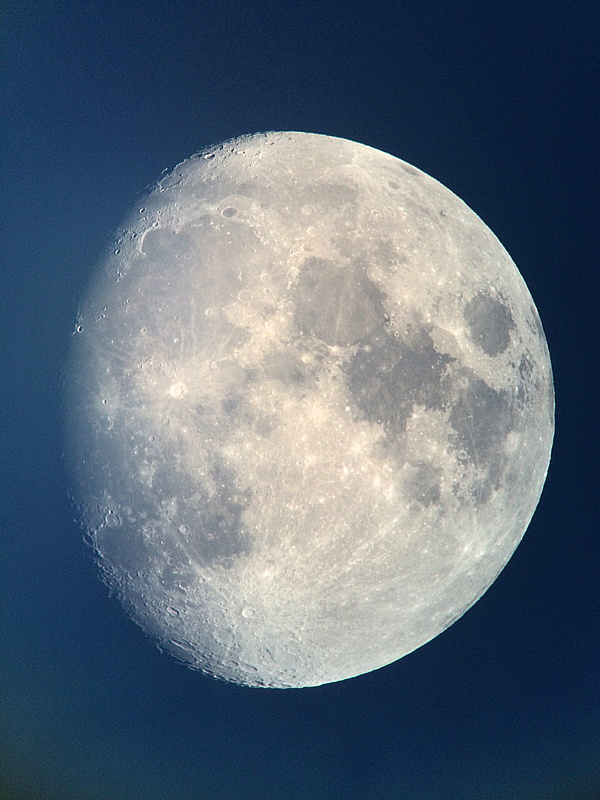
1845 MST: sunset.
Switched to a 26mm eyepiece + 3X TeleXtender (for 231X) and mounted the iPhone 5s on the 8" LX200-ACF using my modified MX-1 Afocal Adapter. I began a Twitter Periscope app Livestream of the Moon. Here are two frames (mirrored view) from the saved video showing some of what the viewers were able to see:
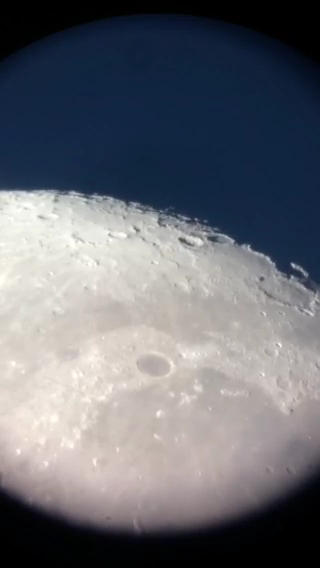
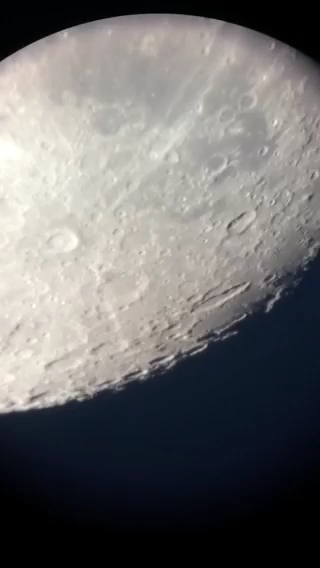
1856 MST: ended the Livestream after 11 minutes. I had many followers of the live video, with lots of great questions and comments. Thanks to everyone.
1905 MST: removed the MX-1, eyepiece, and TeleXtender and began preparations for eyepiece projection imaging of Jupiter with the D7000 DSLR. I began with a 9mm eyepiece (222X). I wanted to test various magnifications and exposure settings to see if I could capture the disks of Jupiter's moons. I first did a HD video, 1/30sec, ISO 6400, EP 222X. This is a cropped frame from that video showing the four moons (Jupiter is overexposed). The insets show a magnified view of each moon, with its disk.

Seeing was not ideal for the tests but disks were captured. I tried using eyepiece projection at 444X and 666X but the resulting videos were too faint or had too much digital noise (due to high ISO) to show disks. (This problem will go away once I get my new D7200 DSLR.) Being able to capture the disks should be useful for some upcoming Jupiter Moons Mutual Events (eclipses and occultations). 1934 MST: ended Jupiter moons imaging tests.
1939 MST: last look at Jupiter, 83X. Then slewed back to the Moon. Switched to the Baader Zoom 8-24mm Eyepiece and toured the moon using various magnifications. Took some handheld iPhone 5s photos at 250X. This is Crater Copernicus, slightly cropped from the full-frame image:
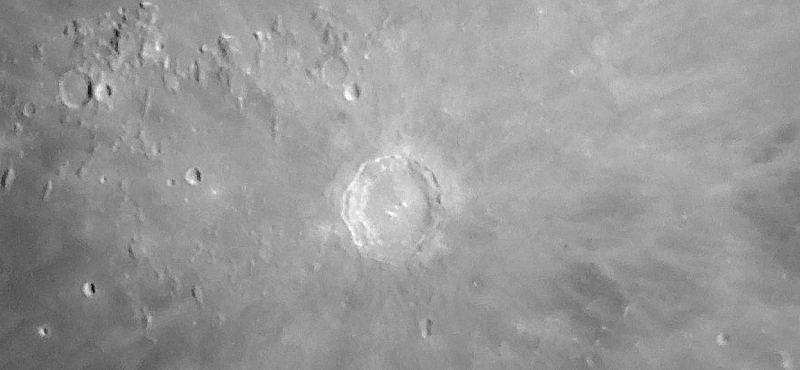
And the southern region of the Moon showing the craters Tycho, Clavius, Gassendi, and many others, slightly cropped from the full-frame image:
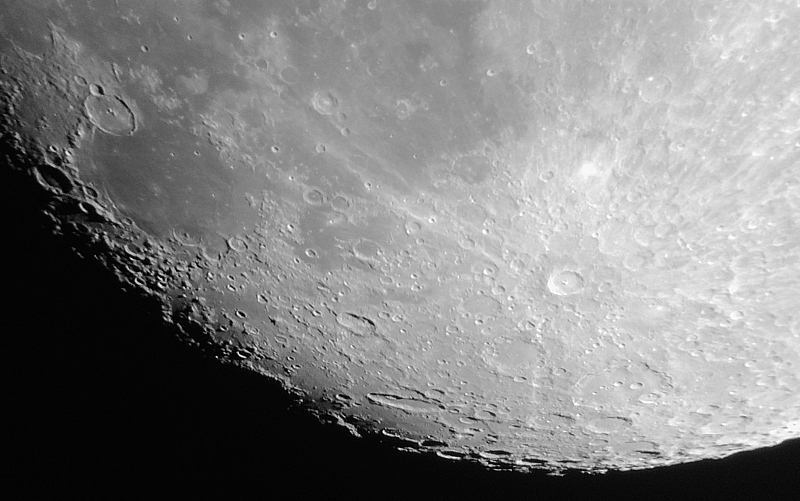
1954 MST: last look at the Moon, 83X. Thicker clouds were moving in from the southwest. Began closing up for the night.
|
Close: Tuesday, 31 March 2015, 2005 MST Temperature: 69°F |
|
Comments are welcome using Email. If you are on Twitter you can use the button below to tweet this report to your followers. Thanks.
Cassiopeia Observatory Home Page
Copyright ©2015 Michael L. Weasner / mweasner@me.com
URL = http://www.weasner.com/co/Reports/2015/04/01/index.html
